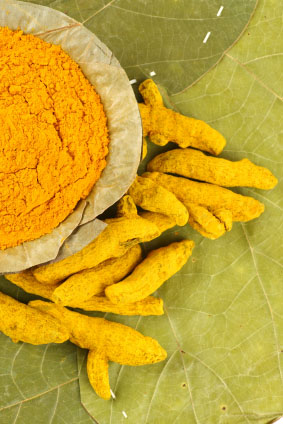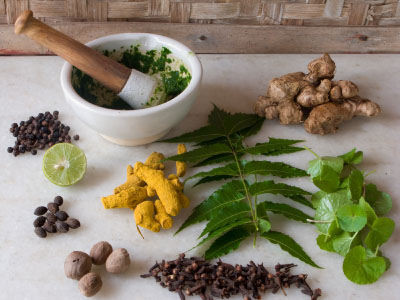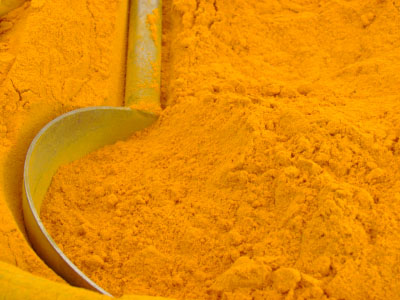Alternative Health Therapy
Health is a state of complete physical, mental, and social well being. It is the result of a long term of regular accumulated effort leading to satisfactory achievement. Doctors generally issue medicine for relieve, created from DRUGS and chemical which will cause other internal body parts to be compromise. Think, Research and Act Wisely. Its your body.
Sunday 5 June 2016
Friday 1 February 2013
http://healthyrichlifeforever.blogspot.sg/
http://battle-of-the-bulgy.blogspot.sg/
Subject: Fwd:
The Effective Sweet Treat that Relieves Arthritis
Pain
1.
The Effective Sweet
Treat that Relieves Arthritis Pain
|
By Jim Healthy On
October 19th, 2012
Did
you know that there are certain kinds of foods that actually help
reduce or even stop arthritis pain? These
"superfoods" are usually easy to find and inexpensive. Of
all the foods that help fight
against arthritis — delicious, sweet pineapple comes up
close to the top of the list. The
Sweet Pain Reliever For
generations, people around the world have used fresh pineapple to ease
their arthritis inflammation. Loaded
with joint-protecting vitamin C, pineapple is undoubtedly a superior
arthritis-healing food. Its
anti-inflammatory ingredient — bromelain — is so potent that many
boxers drink the juice after fights to heal their bruises. A
1960 study compared boxers who took bromelain with those receiving a
placebo. In
just four days, an amazing 78% of those taking bromelain were
inflammation-free, while only 14% of the control group had recovered. Other
than bromelain, pineapple also contains manganese, which strengthens
bones and protects joints. Here
are 5 reasons you
should be indulging in this delicious fruit if you struggle with joint
pain and arthritis:
Higher
intake levels of the antioxidant vitamin C is essential for people with
arthritis. And
just one cup of pineapple has a whopping 94% of the recommended daily
allowance (RDA)! Research
published in the Annals of the Rheumatic Diseases showed
that vitamin C-rich foods protect against inflammatory polyarthritis, a
type of rheumatoid arthritis in which two or more joints are affected. If
you have osteoarthritis, you may be concerned by warnings that you
should not increase your vitamin C intake. But
know that those warnings are based on a 2004 study on guinea pigs! Studies
on humans show vitamin C actually reduces pain,
cartilage loss and disease progression. Reason
#2: Healthier Joint Tissue Pineapple
is a great source of the trace mineral manganese. Manganese
is absolutely essential for building healthy joint tissue and dense
bones. One cup of pineapple provides 128% of the RDA for manganese. Research
shows that manganese tackles free radicals that can damage joint
cartilage. Tip: It's
best to eat your pineapple raw. Fruit skewers alternating fresh
pineapple chunks with strawberries is a great way to do that. Grilled
and cooked pineapple is extraordinarily tasty too. Reason
#3: Smoother Joint Movement Pineapple's
enzymes literally clean up "rusty" joints. When you eat pineapple on an
empty stomach, the enzymes go right to work on your joints. Tip: If
you eat pineapple with other foods, the enzymes divert their activity
to digesting the rest of your meal instead of the gunk in your joints. So
keep pineapple around for between-meal snacks. Juice the hard inner
core as well to take advantage of the concentrated bromelain located
there.
For
optimal arthritis pain-relief, eat fresh pineapple. The
bromelain in pineapple is destroyed by heat, so fresh pineapple will
give you the most benefit. Frozen
pineapple retains active enzymes, but canned fruit and commercially
processed juice don't provide the anti-inflammatory benefit of fresh
fruit. It's
important to note bromelain causes anti-clotting activity. So
you should consult with your physician before combining pineapple with
blood-thinning medications such as warfarin (Coumadin), heparin, or
aspirin. Tip: If
the fruit needs to ripen, keep it on your kitchen counter for a couple
days. You'll know it's sweet and ready to eat when the bottom softens a
bit. Reason
#5: Protection from Inflammation Pineapple's
bromelain halts inflammation. The
sulfur-based enzyme bromelain in fresh pineapple is one of the
best-researched natural anti-inflammatory agents around. Bromelain
clobbers inflammatory agents that trigger joint pain and cartilage
degeneration. A
2006 study cited in Clinical and Experimental Rheumatology found
that supplemental bromelain is effective in easing discomfort from hip
arthritis. The
Arthritis Foundation stated that pineapple's bromelain produces effects
comparable to NSAIDs for relieving pain and inflammation. UK
researchers reviewed ten studies on osteoarthritis and bromelain. They
found that every single one confirmed bromelain's benefits. Tip: Most
of the bromelain in pineapples is found in the core and the stem. So
don't throw away that tough, fibrous core! Just
chop it up, throw it in a blender with some water and pulse to convert
it to juice. If
you'd like to discover more
"superfoods" that can halt your arthritis. And
also drastically reduce your chances of being afflicted by cancer,
heart disease, diabetes. Check
out my Arthritis Interrupted e-book.
It provides you with real and immediate ways to start improving your
health and healing your arthritis. For
a pain-free life! |
Tuesday 9 October 2012
Fanatic Cook: Omega-6 And Omega-3 Content Of Common Foods
Wednesday 5 September 2012
TUMERIC = KUNYIT
"The Spice that Ignites Your Body's Astonishing Immune System*"
5 to 8 times stronger than vitamin E and stronger than vitamin C, this 'antioxidant breakthrough' may help boost your immunity, maintain normal cholesterol levels, and put the brakes on aging.*

One amazing benefit of these herbs is that they’re very low in calories, while being dense in vitamins and minerals.
In the same vein, they’re thermogenic, meaning they naturally boost your metabolism to help you burn calories.* You feel satisfied more easily, so you eat less.* Studies show that consuming certain herbs and spices before each meal can potentially reduce your caloric intake.*
Due to their nutrient-dense status, they promote your overall wellbeing with antioxidants more potent than many fruits and veggies.*
Herbs and spices promote health and wellbeing in your entire body, not just in a particular area.*
This "whole person" approach is why I believe these spices and herbs can benefit you so greatly.
But I consider one particular spice the “granddaddy” of them all, because its benefits are so amazing and far-reaching.
Don't Waste Your Time and Health with
Synthetically Processed Herbs and Spices
Just as it's important to select and consume wholesome, unprocessed organic foods, you should do the same with herbs and spices.Avoid breezing down the spice aisle of your local grocery store to pick up any old herb or spice.
It is important to be very selective.
If the herb or spice you're looking for is processed or not organically grown, you risk missing out on their most potent active ingredients, which provide you with optimal benefits.
If the herb or spice isn't cultivated, harvested, produced, and packaged using certified organic processes, you could be robbed of its healthful active ingredients.
In fact, I recommend you totally avoid herbs and spices that aren't 100% certified organic. Why waste your time -- and risk potential health consequences from artificial ingredients and questionable chemical processes?
India is the home of Ayurveda, recognized as an authoritative source of knowledge and truth in natural health promotion -- with herbs and spices lying at the very heart of Ayurvedic practice. So it would make perfect sense to consider using herbs that were grown in India if you are considering Ayurvedic herbs
How this Ancient Spice Originated Thousands of Years Ago

And of the many herbs and spices I studied, the one in particular that caught my immediate attention was turmeric. It provides you with these whole-person benefits:
- Supports your healthy joint function*
- Promotes your radiant skin*
- Helps improve your digestion*
There's some debate about the timing of turmeric's first use as a healthy spice.
But one thing is certain. Thousands of years ago, people in India and China used the spice. In fact, some stories suggest usage dates back 10,000 years in India when they say Lord Rama walked the earth.
And the ancient Polynesians carried turmeric with them on their incredible voyage across the Pacific Ocean to Hawaii. Today, Hawaiians still use this spice -- known to them as Olena.
While in China, Marco Polo in 1280 AD recorded information on turmeric in his diary:
"There is also a vegetable which has all the properties of true saffron, as well the smell and the color, and yet it is not really saffron."So, turmeric has been used as a substitute for saffron (an old world spice) in Europe for over 700 years.
One of the main healthful ingredients in turmeric is curcumin (a curcuminoid), which as I said, gives turmeric its yellow color.
Western scientists first isolated the curcumin molecule in 1815, obtained its crystalline form in 1870, and determined its overall structure in 1910.
Curcumin can potentially benefit you by:
Promoting your immune system against stress*
- Promoting your immune system*
- Helping you maintain your healthy digestive system*
- Supporting your healthy bones, joints, and overall skeletal system*
- Helping you maintain cholesterol levels that are already within the normal range*
- Promoting your healthy blood and liver functions*
How Turmeric and Curcumin Provide Antioxidant Nutrients*
You probably know that antioxidants are important for your health.I believe antioxidants are your body's #1 way to neutralize free radicals and help you potentially slow down the signs of normal aging.*
Oxidation by free radicals can damage cells and organs -- and thus impact your aging process* -- something I’m sure you’d rather put the brakes on.
Antioxidants are also key nutrients in:
- Supporting your memory function*
- Promoting your heart health*
- Boosting your immune system*
The antioxidant content within turmeric comes from active compounds called curcuminoids.
These curcuminoids deliver antioxidants that may be:
- 5 to 8 times stronger than vitamin E -- and also stronger than vitamin C
- 3 times more powerful than grape seed or pine bark extract
- Strong enough to scavenge the hydroxyl radical -- considered by many to be the most reactive of all oxidants*
How Turmeric Enhances Your Outer Beauty*
Speaking of antioxidant nutrients and their potential to impact the aging process, some of the first aging signs you may see as you get older are changes to your skin.
How, you ask?
Curcuminoids support important blood and liver functions, healthy joints, and your overall well-being,* which in turn helps promote radiant, supple skin.*
Turmeric has been considered to be ‘skin food' for thousands of years in India and other cultures.*
Turmeric helps:
- Cleanse your skin and maintain its elasticity*
- Provide nourishment to your skin*
- Balance the effects of skin flora*
Your Triple-Action Cellular Booster and Adaptogen*
Another potential advantage from turmeric usage involves the smallest living things within you -- your cells.Turmeric can assist your cells in three ways, by:
- Helping neutralize substances that can cause cellular stress*
- Maintaining your cells' integrity when threatened by occasional environmental stressors*
- Providing the antioxidants you need to help support your cells against excessive oxidation and free radicals*
How this Ancient Spice has Become
Embedded in India's Ayurvedic Practice
Turmeric, like other herbs and spices, is a principle herb in Ayurveda -- India's ancient holistic health system. Ayurveda means "knowledge of life" -- with herbs lying at the very heart of Ayurvedic practice.
In Ayurvedic terminology, turmeric includes the following:
- Verdana sthapana -- promotes your healthy nervous system and helps you with occasional discomfort*
- Sangrahani -- supports your absorption of vitamins and minerals*
- Anulomana -- helps you in purging out wastes and building healthy blood*
- Rakta stambhaka -- promotes the wellness of your circulatory system*
What does this mean to you?
Simply, turmeric has been used in Indian culture for thousands of years for a multitude of health-promoting reasons.* An estimated 500 million Indians still use the spice today.
What Are Your Best Sources for Turmeric?
So by now, you might be wondering about potential sources of turmeric.Well, you may already know you can find it in the spice aisle of your local grocery store. But as mentioned earlier, I don't recommend using your local grocery store, due to the quality of their herbs and spices.
Even though there may be some good spices available there, it's very difficult to verify their purity and potency.
Also, the turmeric powder you buy in your store is a spice. It doesn't necessarily come from high-quality organic herbs -- and is not produced using certified organic processes, causing you to risk missing its healthful benefits.
What's more... with store-bought turmeric powder, you'll probably just use it once in a while to cook with -- not on a daily basis to consistently take advantage of the benefits it offers.
So, what other options do you have?
I recommend searching for a high-quality, 100% organic-based turmeric supplement.
But there are some things you should watch for when choosing a turmeric supplement.
Avoid Unnecessary Fillers, Additives, and Excipients
When I did my own research on available turmeric supplements, I found a surprising array of choices.Besides, curcumin and curcuminoid ingredients, I found products with questionable ingredients like fillers, additives, and excipients. An excipient is a substance added to the supplement as a processing or stability aid.
One ingredient, magnesium stearate (also known as stearic acid), is a potentially toxic metal additive from pill production.
Another ingredient I found in many turmeric supplements, Dibasic Calcium Phosphate (DCP), may even inhibit the absorption of essential minerals within your system.
There are others you may find as well, but the bottom line is... you don't want or need these ingredients in your turmeric supplement. Some pose potential health risks -- and all are unnecessary.
Make Sure Your Herbal Supplement Comes from a
Certified Organic Producer Committed to Quality Processes
The key to delivering an organic-based turmeric supplement rests in the manufacturer's commitment to quality and excellence.
So, it's important to highly scrutinize and research the manufacturer's credentials.
In fact, you may not be able to stop with the manufacturer alone. Keep in mind, the total organic process involves planting, cultivation, selective harvesting, and then producing and packaging the final formula.
Here's the type of certifications I recommend you look for:
- Hazards and Critical Control Points (HACCP) -- International food safety certification that World Health Organization (WHO) standards are met
- Safe Quality Food (SQF) -- HACCP-based food safety and risk management system covering the identification of food safety, quality risks, and the validation and monitoring of control measures
- Good Manufacturing Practices (GMP) -- International certification verifies all required practices necessary for an effective food safety program are followed
- International Organization for Standardization (ISO) 9001:2000 -- International standard for quality, safety, ecology, economy, reliability, compatibility, inter-operability, efficiency, and effectiveness
- Orthodox Union (OU) Kosher -- Certifies compliance for Kosher observers and followers
- International organic certifications such as: USDA, EU, and NSOP (India)
Use This Checklist to Find Your Highest Quality Turmeric
To take advantage of all the great benefits turmeric has to offer you, I created a checklist on what you should look for in a turmeric supplement.Whatever you do, don't settle for second best.
Here's my checklist to help you find the best turmeric source:
- Contains only 100% certified organic ingredients -- Turmeric extract with at least 95% curcuminoids
- Comes in supplement form -- Don't rely on your typically low quality and unpredictable local grocery store spice. Additionally when you heat the spice during cooking many of the beneficial properties are lost.
- Avoids fillers, additives, and excipients -- No need for questionable "other ingredients" in the formula
- Provides a vegetable capsule -- Avoid gelatin-based capsules whenever possible
- Is produced by a certified organic manufacturer with high-quality organic and safe production practices -- Don't settle for second best here!
13 Ways this Ancient Herb Can Help You
Spice Up Your Life (and Your Health*)
Let me summarize thirteen ways this 100% certified organic-based Turmeric can spice up your whole person:- Boosts your antioxidant protection against free radicals*
- Helps promote your healthy skin*
- Supports your overall eye health*
- Provides you immune system support*
- Aids your skeletal system and joint health*
- Encourages your healthy liver function*
- Helps you maintain healthy cells with support against free radicals*
- Balances the health of your digestive system*
- Aids you in support of healthy blood and your circulatory system*
- Helps you maintain normal cholesterol levels to support your cardiovascular system*
- Assists your neurological system's healthy response to stress*
- Promotes a healthy female reproductive system*
- Helps you maintain blood sugar levels already within the normal range*
Friday 31 August 2012
Vitamin B2 - riboflavin
- is required for 
Deficiency of vitamin B2 
Dosage 
Toxicity and symptoms of high intake 
Best used with 
When more may be required 
Enemy of vitamin B2 
Other interesting points 
Food sources of vitamin B2 
Vitamin B2 contained in the following Zest for Life products 
- Millenium 2000 - Slimming and weight-loss capsules
- Vitalyze energy boost multi nutrient capsule
- Hair, Nail & Skin supplement - multi nutrient capsules
- Click here to view our full product range.
Burning Eyes
- Watery Eyes
- Redness
- Eye Pain
- Discharge
- Excessive tears
- Burning sensation
- Itching
- Conjunctivitis
- Blepharitis
- Pink Eye
- Sjogren's Syndrome
- Dry Eyes
- Photophobia
- Rosacea
- Wegener's Granulomatosis
What Causes Burning Eyes?
- Dust
- Windy days
- Sunburn
- Sun exposure
- Smoke, including second hand smoke
- Airborne chemical irritants
- Other chemical irritants, including chlorine in a swimming pool
- Hair spray and/or hair dye
- Smog
- Pollen
- Dust
- Mold
- Pet dander
- Fragrances, such as a burning incense, perfume or cologne
- Dry Eye Syndrome
- Conjunctivitis
- Blepharitis
- Pink Eye
- Sjogren's Syndrome
- Photophobia
- Age
- Medications
- Bright lights




